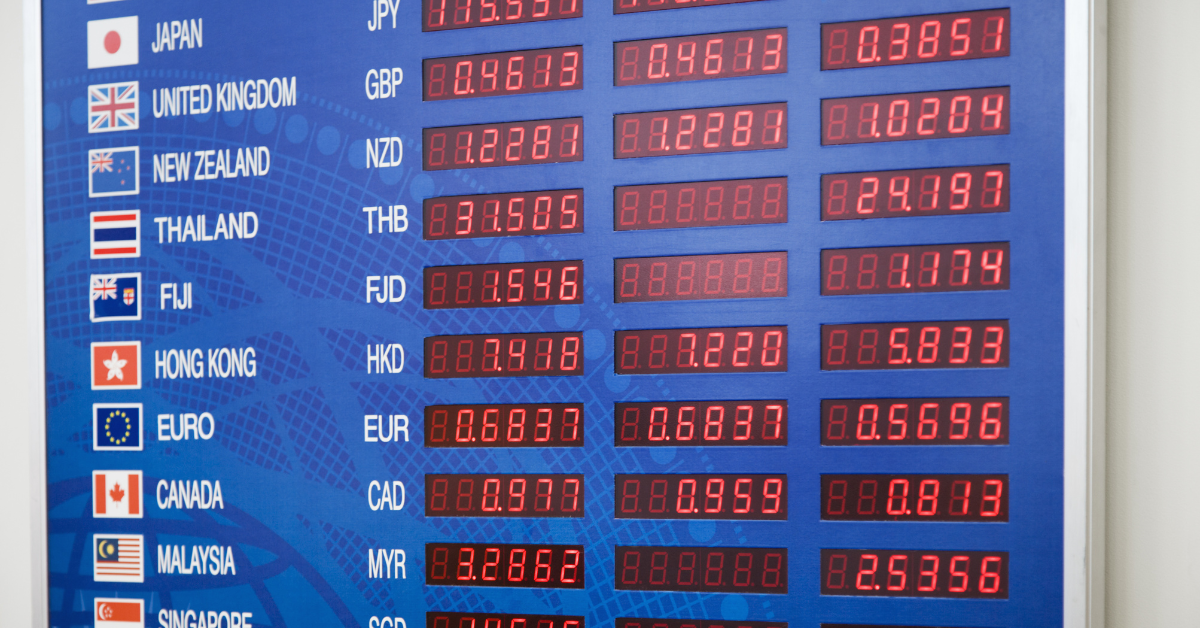Introduction
This blog explores emerging trends and economic indicators influencing exchange rates, providing insights for investors, policymakers, and businesses to navigate uncertainties in the global economy.
Emerging Trends Affecting Exchange Rates
Several dynamic trends are shaping the direction of exchange rates going forward, with ramifications for international financial markets and economic policies.
Digital Currencies and Blockchain
The rise of digital currencies and blockchain technology is set to disrupt traditional financial systems, particularly Central Bank Digital Currencies (CBDCs), offering efficient and secure transactions.
Geopolitical Shifts
Geopolitical tensions and collaborations significantly influence currency values, leading to trade wars, economic sanctions, and regional alliances. As new economic powers emerge, the geopolitical landscape remains a critical factor in currency valuation.
Globalization vs. Protectionism
The tug-of-war between globalization and protectionism also influences exchange rates. While globalization promotes currency stability through interconnected economies, rising protectionist policies can lead to currency wars and competitive devaluations, affecting global exchange rate stability.
Predictions for the Future of Exchange Rates
Predicting exchange rates involves complex analyses and an understanding of numerous variables. However, several predictions can be made based on current trends:
- Increased Volatility: The confluence of digital currency adoption, geopolitical shifts, and uncertain global economic recovery paths may lead to increased volatility in exchange rates.
- Changes in Reserve Currencies: Emerging market currencies and digital alternatives may pose a threat to the USD’s hegemony as traditional reserve currencies, creating a more diverse landscape of reserve currencies.
- Greater Regulatory Scrutiny: As digital currencies gain prominence, expect increased regulatory oversight, which could impact how these currencies influence traditional exchange rates.
Economic Indicators to Watch
To navigate the future of exchange rates, several economic indicators are crucial:
Inflation Rates
Inflation significantly affects currency value. Higher inflation in a country tends to depreciate the currency value of its trading partners.
Interest Rates
Central banks use interest rates to control monetary policy. Higher interest rates offer lenders higher returns relative to other countries, attracting foreign capital and increasing the value of the home currency.
Current Account Balances
A country’s balance of trade impacts its exchange rates. Countries with large deficits are net buyers of foreign currencies, leading to the depreciation of their currency.
Political Stability and Economic Performance
Political stability and robust economic performance attract foreign investors. Countries with such environments tend to have stronger currencies due to the higher demand for their domestic currency.
Technological Advances
The adoption of new technologies that streamline trading and financial flows can also influence exchange rates. Technological efficiency can enhance a country’s economic position by attracting investment and bolstering its currency.
Conclusion
The future of exchange rates is influenced by economic, technological, and geopolitical factors. Understanding these dynamics, staying informed, and monitoring economic indicators are crucial for international finance professionals. Adapting to change and fostering international cooperation is key.
#ExchangeRates #GlobalEconomy #DigitalCurrencies #Blockchain #GeopoliticalShifts #Globalization #Protectionism #EconomicIndicators #FutureTrends #FinancialMarkets



